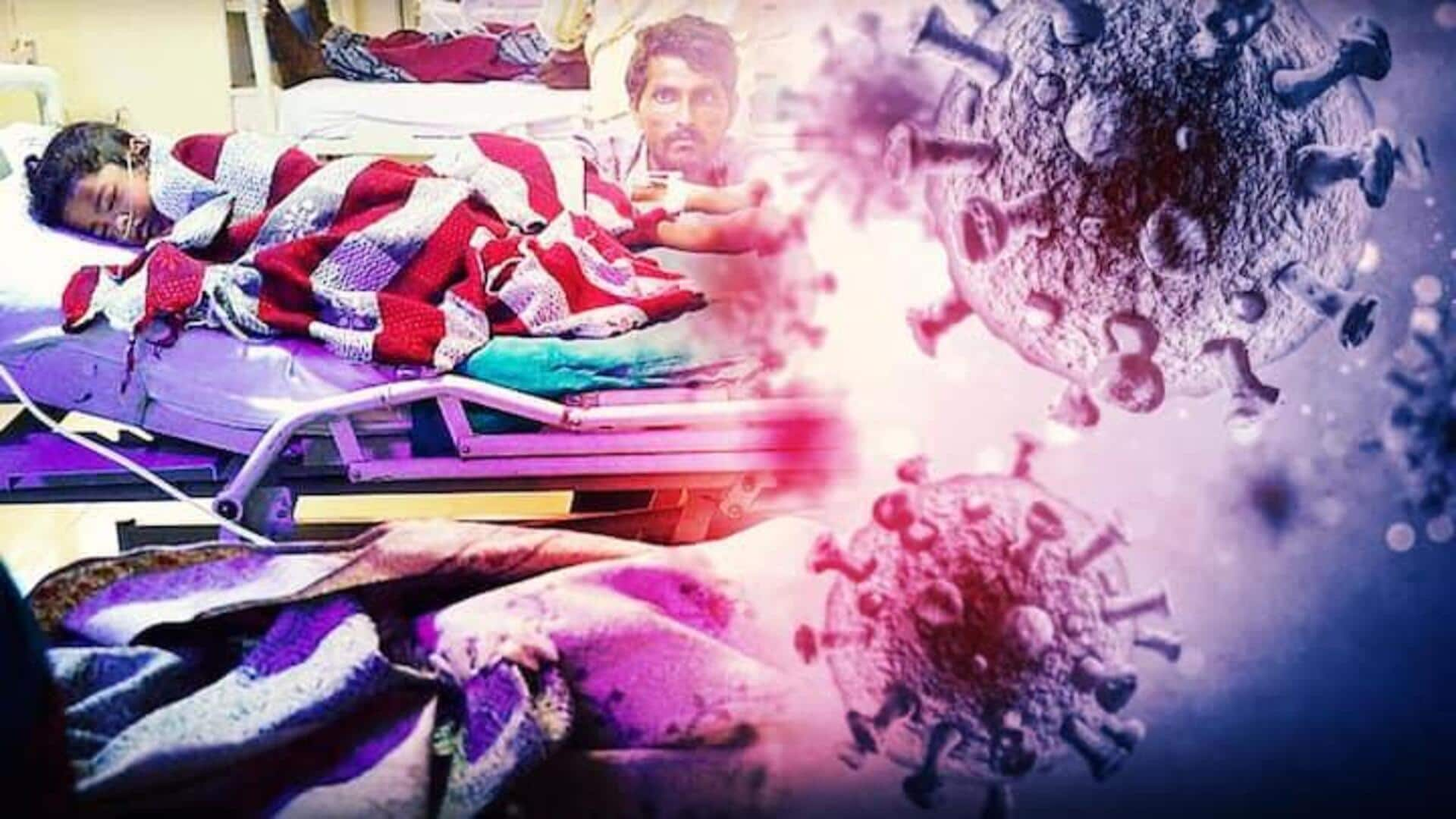
Chandipura virus outbreak in India largest in 20 years: WHO
What's the story
The World Health Organization (WHO) has said that the Chandipura virus outbreak in India is the largest in two decades. From early June to August 15, the Ministry of Health reported 245 cases of Acute Encephalitis Syndrome (AES), with 82 deaths, resulting in a case fatality rate of 33%. The epicenter of this outbreak is Gujarat, with additional cases identified in neighboring states Rajasthan and Madhya Pradesh.
Geographic impact
Virus spread across 43 districts in India
The current outbreak of the Chandipura virus has spread across 43 districts in India, with 64 confirmed cases of CHPV infection. The WHO stated, "CHPV is endemic in India, with previous outbreaks occurring regularly. However, the current outbreak is the largest in the past 20 years." This virus belongs to the Rhabdoviridae family and is known for causing sporadic cases and outbreaks of AES particularly during monsoon season.
Disease profile
Chandipura virus transmission and fatality rate
The Chandipura virus is transmitted by vectors such as sandflies, mosquitoes, and ticks. It has a high case fatality rate (CFR) ranging from 56-75%, with no specific treatment or vaccine currently available. The WHO said that early access to care and intensive supportive care can improve survival rates for patients infected with this virus.
Treatment
No antiretroviral therapy for Chandipura virus
Currently, there is no specific antiretroviral therapy or vaccine available for the treatment of the Chandipura virus. Managing brain inflammation becomes crucial to prevent mortality. Disease progression can be rapid, with high fever in the morning potentially leading to kidney or liver damage by evening. The virus was first isolated in 1965 during a dengue/chikungunya outbreak investigation in Maharashtra. It has since caused significant outbreaks in states like Maharashtra, northern Gujarat and Andhra Pradesh.
Prevention measures
WHO calls for enhanced surveillance in high-risk areas
The WHO has called for enhanced surveillance in high-risk areas, particularly focusing on children under 15 years old presenting with acute onset of fever and central nervous system symptoms. The organization also stressed the importance of laboratory diagnostic capacities for timely collection, transport, and testing of serum and cerebrospinal fluid samples. Despite the severity of the outbreak, a declining trend in new AES cases has been observed daily since July 19.
Geographic spread
Chandipura virus endemic to central India
Notably, the Chandipura virus infection remains largely endemic to the central part of India—where the population of CHPV-spreading sandflies and mosquitoes is higher. According to reports, outbreaks often occur in rural, tribal and peripheral areas due to the prevalence of sandflies. There is also a seasonal aspect to the infection, with outbreaks reported more frequently when the sandfly population increases.
Transmission update
No human-to-human transmission reported yet
To date, no human-to-human transmission of the Chandipura virus has been reported. The WHO warned that further transmission is possible in the coming weeks due to favorable conditions for vector populations created by the monsoon season. In response to this threat, comprehensive insecticidal spraying and fumigation are being implemented to control vectors that transmit the virus.
Response efforts
National joint outbreak response team deployed
In an effort to control and prevent further spread of the Chandipura virus, the Union Health Ministry has deployed a National Joint Outbreak Response Team (NJORT). This team is assisting the Gujarat government in implementing public health measures and conducting a detailed epidemiological investigation into the outbreak. Additionally, initiatives are underway to educate both the public and medical personnel about the virus, its symptoms, and preventive measures.